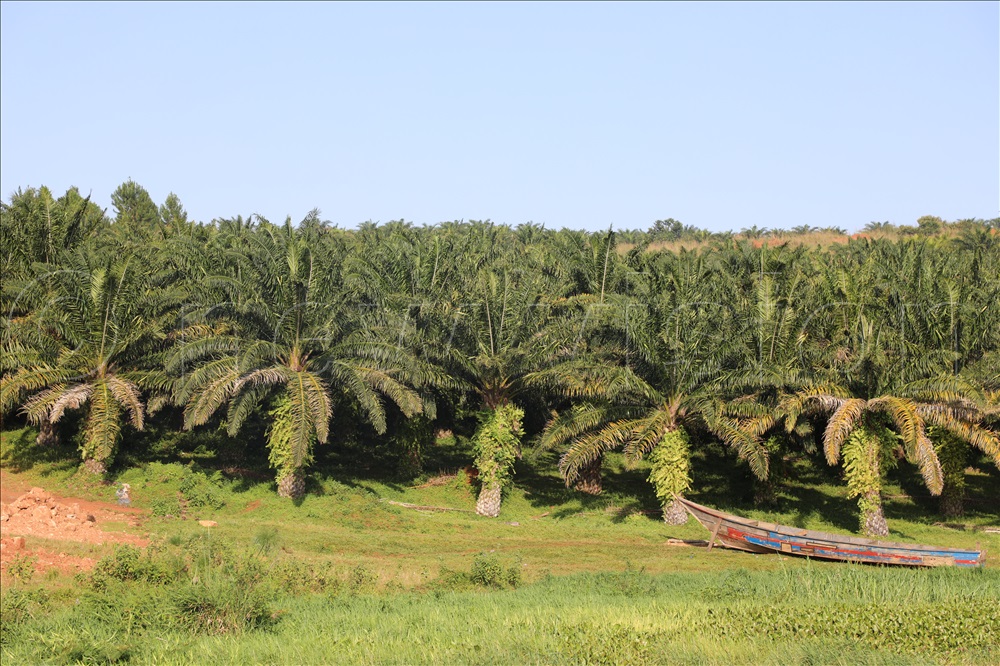By Samuel Nkuba
The legislators on the Parliamentary Agriculture Committee have expressed worries about the continuity of crude oil production as farmers and investors plan to replant next year.
With the current plantations of Oil Palm Uganda Limited and Out-growers, production stands at 10% while other crops such as sunflower produce 10%. This, makes the country produce only 20% of the needed vegetable oil for production of cooking oil, fats, and soap among other products.
During their assessment tour on the performance of the oil palm project, legislators were informed that despite the high demand for the crop, farmers who planted in 2005 are on the verge of replanting come 2025.
“The first plantations’ life span has come to an end and we hope to start clearing by 2025,” says Damanik Salidini, the OPUL General Manager.
According to Minister of Agriculture, Fred Bwino Kyakulaga, Uganda spends $300m to import vegetable oil from Malaysia and other countries since it needs half a million tons annually.

“World Health Organization stipulates that a person should consume 15kgs of vegetable oil per year and this is processed from crude oils from palm trees and other crops,” says Minister Bwino.
Veronica Nanyondo, the Woman MP Bukomansimbi tasked OPUL management to lay a strategy before the committee on how to keep production uninterrupted by the replanting process since the country needs more production to decrease money spent in importing oils from Malaysia.
“Since farmers who have been feeding the mills and the country at large will be replanting, we might see the producting decreasing from 10% which we’re on currently,” says Akello Christine, the Erute North constituency legislator.
Alternatives to increase production
Having opened up Buvuma, Sango Bay and Mayuge hubs, the Ministry of Agriculture has sighted out other places which are favourable for palm plantations.
Though Omoro County legislator Ojok Oulanya appealed for including southern parts of Uganda, there are some factors considered before setting the inception of palm farms.
“There is a need to scale it to the rest of the country so that production increases as well as changing the economic status of the country,” says Oulanya.
The research carried out by NARO discovered that only areas in a range of 30km along the shoreline of Lake Victoria and inside islands are favourable for this crop.
“We were advised that Kagadi, Bundibujjo, Kibaale and some parts of Zombo district can favour palm plantations and we hope to extend the project to these areas,” says Minister Kyakulaga.
Furthermore, Damanik informed legislators that intercropping is one the methods which they will use so that there is continuous production.
“We will clear only 500 hectares in a certain period until we finish the 66500 hectares of our plantations,” he says.
What you should know
Before palm farming, Kalangala districts’ major economic activity was fishing. It used to accommodate almost 98% of the population followed by lumbering and farming at a small scale.
In 2005, the Government through the Ministry of Agriculture introduced palm oil cultivation.
Islanders didn’t embrace it at first because of myths and misconceptions that it was a trick of grabbing their land.
The business currently employs 2119 farmers fetching between sh4b to 5b every month paid to palm oil out-growers.
In May 2023, President Museveni donated sh50.19b which farmers had paid back to cover a loan that was offered to them during the inception of this project at least to open up plantations in Kyamuswa Islands county in Kalangala district.
In 2010, harvesting commenced in farmers whereas by 2024, the monthly average Fresh Fruit Bunches yield is 3,050 tons. This implies that over 434 million kilograms have been harvested and delivered to OPUL mills supplementing on production of Oil Palm Uganda Limited’s production.
Other inputs
Going forward, the Bujumba MP Julius Mukasa Opondo implored the parliamentary committee to set a constant price which the company should pay to farmers per kg rather than the fluctuating prices set monthly.
“Though the prices depend on dollar rates and Malaysia prices, we need to have our price which will be fair to our farmers,” he says.
Last May, a kg of FFB cost sh910.
Joseph Nkambwe, the Island block farmer leader, appealed to the committee to lobby for a bigger ferry that can easily and swiftly transport farmers’ FFBs from Bunyama and Bubembe as they also plan to join Bugaba island.
“The ferry we have (MV BBB) is too small and works once a day in the divided three days of a week on Bunyama and Bubembe Islands. It also accommodates only six vehicles yet per trip, farmers load over nine vehicles,” says Nkambwe.
Auma Alinda Agnes, the Lira Woman legislator and deputy chairperson of the parliamentary agriculture committee applauded islanders for embracing this project which has changed the economic status of islanders, and improved infrastructure such as roads among others.
“We have discovered that farmers are facing challenges which we’re going to look into as a committee and look for possible ways to solve them,” she says.
She further urged farmers to diversify from owning plantations only, but also rearing goats, and start poultry projects which can boost their income levels.
Farmers have appreciated the Government of Uganda through President Yoweri Museveni who lobbied for this project that has changed the lives of islanders who used to depend on fishing only.
LEAD PHOTO CAPTION: MPs on agriculture committee together with some farmers after touring out-growers farms in Kalangala district. Photo by Samuel Nkuba





